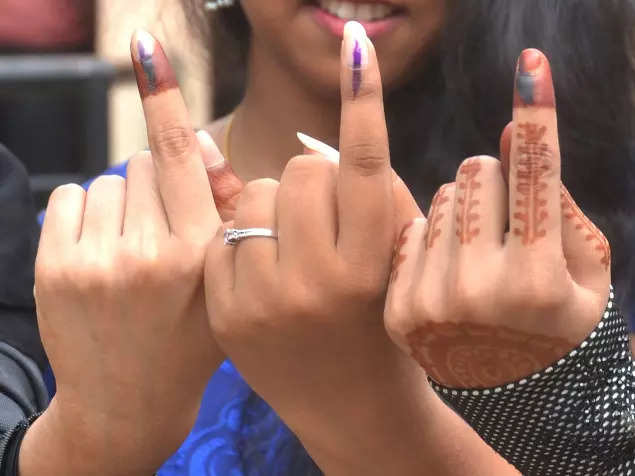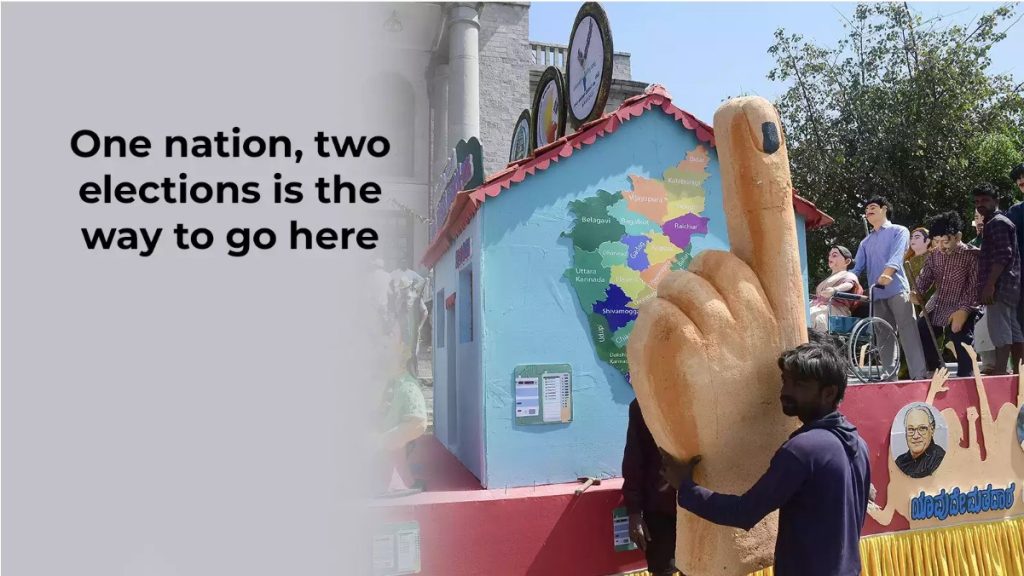Simultaneous state elections are desirable but they should not be clubbed with a general election. Instead, simultaneous state elections should be held two and a half years after a general election.
The government has appointed a committee to go into the proposal to have simultaneous elections to Parliament and state assemblies. This has led to speculation that the coming special session of Parliament has been summoned to make the legal and constitutional amendments necessary for the purpose. The slogan ‘One nation, one election’ is being tom-tommed. This is not the first time the BJP has made such a proposal, but for the first time it may actually have the votes, provided some regional parties lend a hand.I agree that simultaneous state elections are desirable. But they should not be clubbed with a general election. Simultaneous state elections should be held two and a half years after a general election. This will be somewhat similar to mid-term Congressional elections in the US. Voters should not have to wait a full five years to express dissatisfaction — they deserve a chance every two and a half years. That is why the slogan should be ‘One nation, two elections’.Right now if a government falls and mid-term elections are held, the new assembly has a full five-year life. To ensure simultaneous elections this provision will have to be amended. Any new government should rule for only the remaining part of a five-year term, not a fresh five years. That will ensure that state elections remain simultaneous regardless of how many governments fail to last a full term.

The key question is not the cost of elections but their fairness of representation. Voters should not have to wait a full five years before being able to express their dissatisfaction
Two major reasons are given for favouring simultaneous elections. First, they will greatly reduce the cost of holding elections — not just government costs but the private costs of fighting elections. The two together may save over a thousand crore.Second, India currently has several state elections every year. This means all parties are constantly in election mode and populist giveaways take precedence over long-term development. Simultaneous elections would give both central and state governments five full years to focus on development.Opposition parties say these are not the real reasons at all. Narendra Modi is far more popular than his party. This is why the BJP fares better in general elections than state elections. The most striking contrast comes from Delhi. In both 2014 and 2019, the BJP swept all seven Delhi seats in the parliamentary election, testimony to Modi’s popularity. But in the subsequent state elections, AAP won 67 of 70 seats in 2015, and 62 seats in 2020.If simultaneous elections are held for the Centre and states, with voters voting for both in one single ballot paper, Modi’s popularity is likely to spill over from parliamentary to assembly seats. That will surely benefit the BJP, and so Opposition parties are strongly opposed.

PM Modi is far more popular than his party. This is why the BJP fares better in general elections than state elections. The most striking contrast comes from Delhi
Atal Bihari Vajpayee had proposed simultaneous elections in 2003, when he was seen to be very popular, and Opposition parties opposed the move then too, for the same reason. The irony is that Vajpayee lost the 2004 general election. The popularity of a prime minister does not automatically translate into votes for the party even in a general election. However, Modi is clearly more popular than Vajpayee ever was.Opposition parties claim that simultaneous elections will go against the spirit of federalism, diluting issues at the state level and focusing attention on central issues. This is a weak argument. Elections were held simultaneously in the 1950s, and nobody claimed that federalism was killed. Then, as state governments fell for one reason or another, every state began to have elections on different dates. That is why we currently have several state elections per year. Separate state elections were not part of the original election design.The Opposition also claims that the supposed cost savings of simultaneous elections may be illusory as it will require the procurement of thousands of additional electronic voting machines and VVPAT machines (for providing a paper trail to verify genuine voting). In March, the Election Commission had indicated that simultaneous elections in 2024 would entail additional spending of Rs 5,100 crore. The cost would go up to Rs 8,000 crore in 2029.But that has a flaw. A democracy requires that the will of the people is reflected in a fair way. The key question is not the cost of elections but their fairness of representation. Voters should not have to wait a full five years before being able to express their unhappiness or otherwise. Simultaneous state elections will save huge sums compared with having different state elections every few months. These should provide voters with a mid-term vote on not just each state but the nation too.In many countries, voters can now demand the recall of elected governments. In the US, many states provide for petitions that, with enough signatures, can lead to a referendum on the Governor’s continuance. India is not ready for recalls. But the notion of rulers being accountable in between five-year elections is an excellent principle.
This article was originally published by The Times of India on September 9, 2023.


